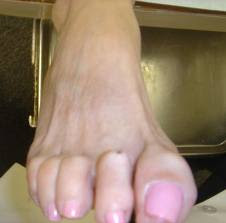Baastrup disease: Lumbar interspinous bursitis
This disease is named after Danish radiologist (1855 - 1950) Christian Ingerslev Baastrup. Introduction & Epidemiology: It is claimed that Baastrup disease is responsible for intractable LBA (1). Though it is reported in mostly lumbar spine it’s cervical spine variant is also reported (2). Gardella called Baastrup disease as spinous process syndrome (3). It is reported in many occupational areas such as miners (4) & heavy vehicle drivers (8). Among of much debate now it is considered mostly a case of aging related problem. Let us discuss in little more detail: The Baastrup disease is characterized by the development of abnormal contact between adjacent spinous processes of the lumbar spine that results in rubbing against each other producing a bursitis which further result in focal midline pain and tenderness relieved by flexion and aggravated by extension. Epidemiology: It tends to be more common in the elderly. According to Maes et al (5) the prevalence of Baas...



